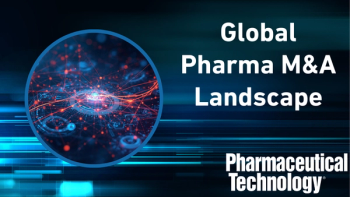
- Pharmaceutical Technology-01-02-2009
- Volume 33
- Issue 1
A New Start for New Cells
The incoming administration has renewed hope for stem cells, but less adequate copycats may follow.
Now that the Obama administration is about to take office, you can feel the release of all that pent-up energy and frustration that has been building among researchers and drug developers working with human embryonic stem cells. For nearly 15 years (federal funding restrictions have been in place since 1994, during the Clinton administration, and became even more restrictive during President Bush's tenure), these scientists have said that the single most important factor in advancing stem-cell research—and possibly even therapies—would be "a new administration."
Michelle Hoffman
Indeed, President-elect Obama has stated publicly that his administration would relax regulations governing federal spending on embryonic stem-cell research. For example, in a statement received by the group Science Debate 2008 in August from the Obama campaign, and quoted by ABC News on Nov. 11, 2008, (
An unscientific survey of press releases, product announcements, and exhibits suggests to me that drug companies, equipment vendors, and outsourcing providers are getting ready to scale up their stem-cell research and manufacturing capabilities. In fact, I will share with you my hunch that the growth area in pharma discovery over the next year or two will be in the area of stem-cell-related therapies (and associated equipment, technologies, and services). Another piece of evidence that this may be the case has more sinister undertones: the rise in stem-cell-related scams.
In soap operas, any time a promising young ingénue comes into town, you can be sure that an evil twin is sure to follow. So, too, I'm afraid, with a promising new drug or therapy. Think back to the days when the class antidepressants known as the selective serotonin reuptake inhibitors (SSRI), such as Prozac, came onto the market. It didn't take long for "alternative" SSRI-type products to follow. And I don't think I have to tell anyone with an email account, how many alternative erectile dysfunction remedies are available "without a prescription." I'm guessing my Spam filter has thousands in it right now—1110, to be exact (OK, maybe some of those are alerting me to the 60 million Euros I won in the European lottery). The point is: You know that a phenomenon may be in the offing when the snake-oil salesmen show up.
A study conducted by Darren Lau and colleagues at the University of Alberta in Edmonton, Canada, and published in Cell Stem Cell (DOI 10.1016/j.stem.2008.11.001; Vol. 3, Dec. 4, 2008, pp. 591-594), examined direct-to-consumer (DTC) websites advertising stem-cell based therapies. They concluded, "The direct-to-consumer portrayal of stem-cell medicine is optimistic and unsupported by published evidence." The websites, the authors said, overrepresented the benefits and underrepresented the risks of therapies for, sadly, conditions such as Parkinson's and Alzheimers that have not been amenable to other forms of treatment. Sadder still, at an average cost of $21,500, these therapies exploit patients' pocketbooks as well as their hopes. The authors caution patients to be wary of claims made by DTC stem-cell clinics advertising on the Internet. They also call for more research to either substantiate clinics' claims or to "develop stem cell therapies that actually work."
Now that we're entering a New Year, with a new administration that has a new attitude toward stem cells, US-based scientists can get back to the business of finding just such therapies. In the meantime, caveat emptor.
Speaking of new beginnings in the New Year, I'd like to call your attention to "Insider Solutions," a new quarterly column debuting in this issue. In it, editorial board member and pharmaceutical consultant Susan J. Schniepp offers practical insights for dealing with common compendial and regulatory issues. I'd also like to thank all of our columnists, authors, reviewers, and board members for their continued efforts on our behalf. And to you, the readers, I wish the very best for 2009.
Michelle Hoffman is editor-in-chief of Pharmaceutical Technology. Send your thoughts and story ideas to
Articles in this issue
about 17 years ago
Optimizing Small-Molecule Synthesisabout 17 years ago
Report from: Pakistanabout 17 years ago
Survival of the Fittest Companiesabout 17 years ago
In the Spotlight February 2009about 17 years ago
Evaluating the Pieces of the Pharma Supply Chainabout 17 years ago
The Postapproval Management Planabout 17 years ago
It's Only Natural: Using Polymers in Drug Deliveryabout 17 years ago
Pharma Capsulesabout 17 years ago
Silicone Microdroplets in Protein Formulations—Detection and EnumerationNewsletter
Get the essential updates shaping the future of pharma manufacturing and compliance—subscribe today to Pharmaceutical Technology and never miss a breakthrough.




